WHY I LOVE TUMBY
Shane Mensforth takes an in-depth look at one of his favourite South Aussie fishing/holiday destinations.
My first real experience with Tumby Bay came back in 1977 during my tenure as a teacher in Whyalla. I had arranged a four-day school excursion, to be based at the Thuruna campsite, about 25km south of Tumby, and had planned to buy our groceries en route at the local supermarket. We had 50-odd kids on board a rather well aged charter bus, all of whom were primed and ready to go. I had another teacher and two parents with me to keep the whole camp running and the kids under control, and the mood was pretty upbeat as we rolled out of Whyalla for the 200km trip southward along the Lincoln Highway.
I had phoned ahead to let the supermarket know we were coming and to provide a grocery list we hoped they could fill. I had briefly met the supermarket proprietor, Tom Tierney, a year or so earlier during a fishing weekend in Tumby, and looked forward to catching up again. Tom had already amassed an impressive reputation as a ‘gun’ local angler, and I knew we’d have plenty to chat about during our Tumby Bay stop-over.
It must have taken an hour in Tumby to load the old bus with the groceries needed to feed the kids for four days, and when we eventually got everything and everybody back on board, the first of several mechanical problems reared its head. According to our driver, who was a similar age to the bus, the alternator light had been flashing for much of the trip down from Whyalla. Despite a couple of minutes of cranking, the engine refused to restart, and pretty soon the battery died completely.
With no suitable replacement battery available in Tumby, we were stuck. The local mechanic tried to help out with jumper leads, but the old battery was obviously too far gone to accept the charge, so he suggested we push start the bus! I thought he was joking, of course, but within a couple of minutes we had assembled enough local bodies to have a crack at what seemed a ludicrous solution to a potentially crippling problem. The driver jumped in, selected a low gear, and we all put our backs into what I was sure would be a waste of time.
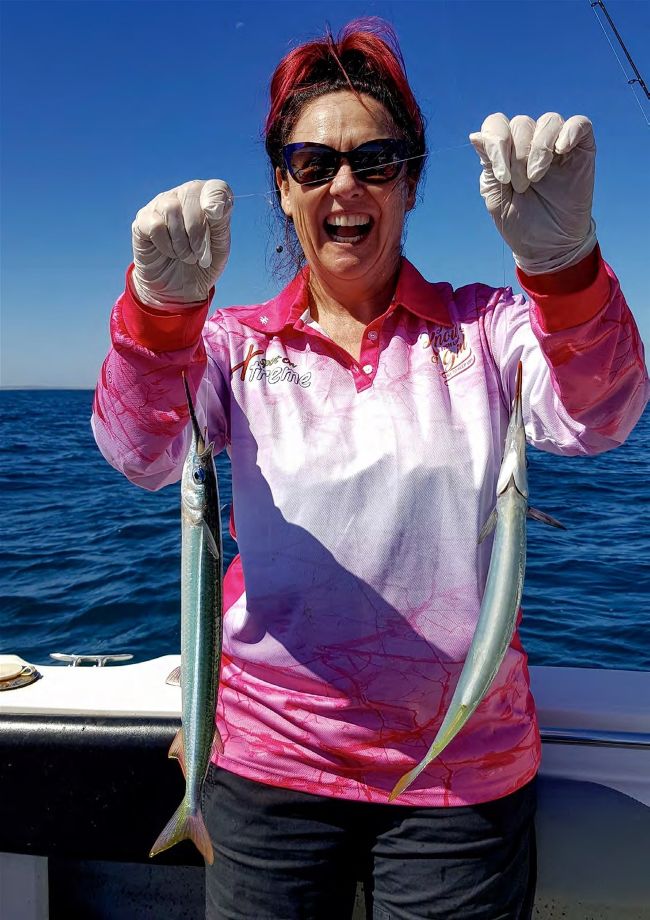
Louise Webb with a double header of big gar from Tumby’s Second Creek
Almost unbelievably, however, we managed to eventually build enough momentum for the old girl to splutter into life in a cloud of black diesel exhaust smoke. We would arrange for a new battery to be brought down from Whyalla as soon as possible and the camp was back on! Through all of this I got to spend time with Tom Tierney and his wife, Judy — a relationship that would develop over decades to the point we are now lifelong friends.
All of the above took place in April, when the annual mullet ‘run’ was in full swing and, as there were a lot of kids in the excursion group who were keen fisho’s, we were soon on the beach in front of the campsite with rods in hand. Many had brought their own tackle, and it didn’t take long for the first big mullet to hit the sand. A heavy supply of berley soon had the fish boiling the water, and it was beaming smiles all round as the kids got stuck into them. Even those who hadn’t fished before joined in, and within an hour everyone had caught at least one big, plump yellow eye. Some of the more experienced young anglers had landed a dozen or more in that time, and I doubt I’ve ever seen a more animated group of ten-yearolds.
I can recall filleting each and every one of those mullet that evening — a task that took at least two hours — and we ended up serving them for dinner the next evening. Even those who protested that they hated fish were soon hoeing into chunky fillets; most likely because they had never eaten fresh fish before, and especially fish they had caught themselves. It was a particularly satisfying moment for me, and one I’ll never forget.
I’ve been a regular visitor to Tumby Bay ever since that maiden visit. My own kids learned to love the place from an early age, and now my grandkids are following suit. I reckon there are few other locations statewide that provide as much for visiting families, and not just on the fishing front either. As well as a truly superb seaside location, Tumby offers two supermarkets, a modern, well-equipped hospital, pharmacy, several GP’s, a lovely caravan park, a multi-lane boat ramp and marina, two great pubs, 24-hour fuel options, delightful cafes and a heap of affordable accommodation choices — all in a smallish town with a population of under 3,000. You’ll have to look long and hard to find another coastal location that offers so much in such a compact package.
About the only downside to the whole Tumby Bay thing now is its lack of an accessible town jetty. It’s going on two years now since the 350m-long jetty was closed due to concerns about its structural integrity — a major loss to the town, both in terms of the economic loss due to reduced tourism and, probably more significantly, the social loss to the local community. I can’t recall too many times driving past the jetty when it was operating without seeing half a dozen anglers trying their luck, or a mob of kids diving and swimming.
Recreational jetties like Tumby’s really do play a crucial role, particularly in regional centres around the state. It’s a fact of life that they are expensive to maintain, even with Government assistance, and that many scattered around our coastline are heading down a similarly precarious path. Local councils invariably find it difficult to come up with enough cash to keep their jetties in good shape, and I can see this problem accelerating as the structures grow older.
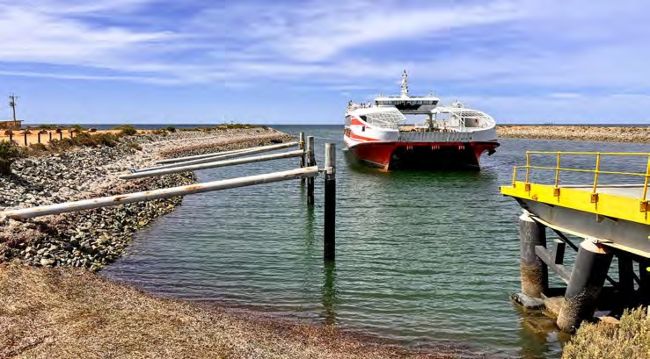
Hitching a ride on the SeaSA ferry makes the long drive much easier
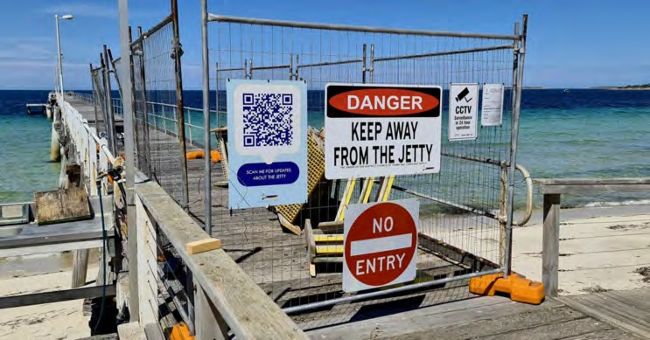
Tumby’s jetty is currently closed — a situation that needs to change in a hurry
One solution that sticks out for me is the potential involvement of a large, cashed-up company with significant ties to the area. The Canadian-based agricultural giant, Viterra, is an obvious one to look at first, as they have an operations base in Tumby Bay and an imposing presence in the general area. In the same way that GFG contributed to the reconstruction of Whyalla’s brilliant new rec’ jetty, I’m sure it would be worth contacting Viterra’s PR department to ask the question. The possible involvement of a large company like this could only enhance its reputation and standing within the Tumby Bay community. Even naming a new or refurbished structure after the benefactor company might be worth considering; to my way of thinking at least, anything that has the potential to get Tumby a new jetty should be put on the table.
But now off my jetty soapbox and back to why I love this place so much!
The fishing options in and around Tumby are many and varied, whether you have a boat or not. From the shore you can catch yellowfin whiting in the warmer months, mullet, flathead, gar, tommies, salmon trout, calamari, snook and even the occasional King George whiting if you know where to go. Although much of the marina frontage is privately owned, there are a few locations you can try for most of the aforementioned species, plus bream and some blue swimmer crabs in season.
Naturally, trailing a boat to Tumby opens possibilities further. If you own a tinny, much of the bay itself is worth fishing in reasonable weather, and the beautiful Second Creek provides a great option if it’s blowy outside. There’s a Marine Park sanctuary zone in parts of Second Creek, however, so make sure you’re familiar with its boundaries if you opt to fish there.
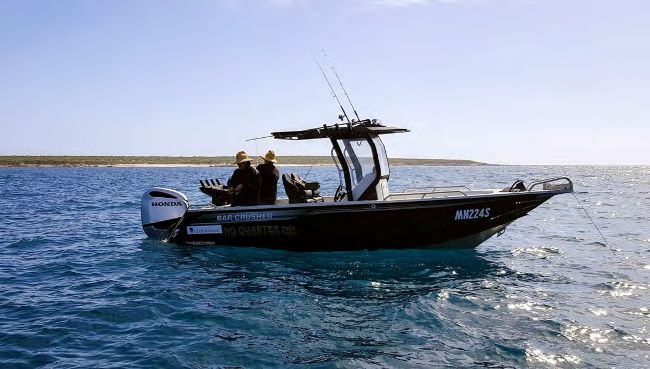
Getting stuck into the whiting in the SJB Group
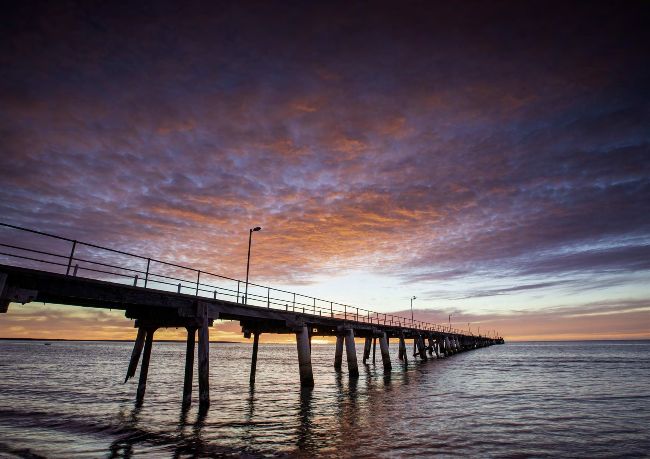
Tumby jetty is generally regarded as one of the best in SA for rec’ fishing. Its current state of disrepair is truly heart breaking

There is plenty of ‘whiting ground’ scattered throughout the SJB Group
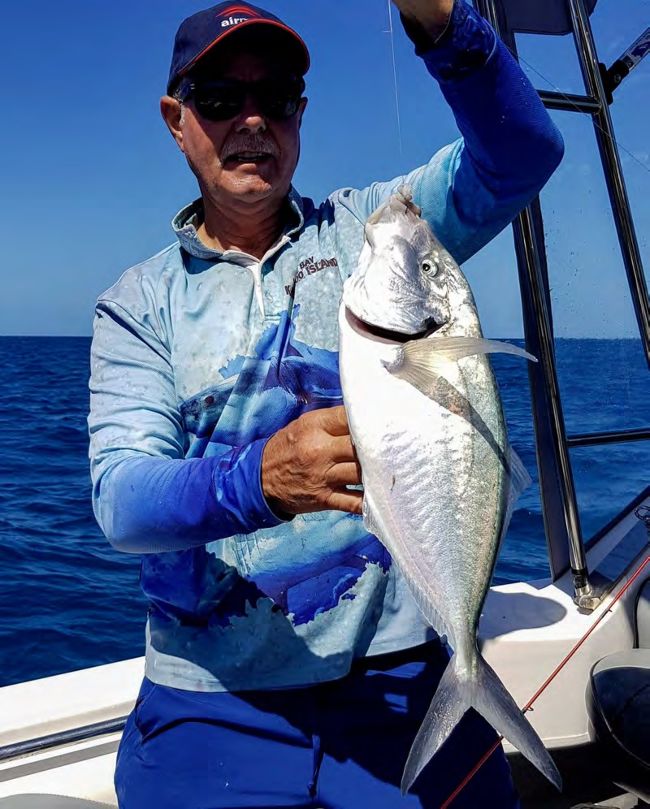
Misho Militch with a lovely trevally that grabbed a whiting bait
A larger trailer boat will unlock one of SA’s most beautiful and fish-rich offshore locations, the Sir Joseph Banks Group. We’ve run several in-depth articles on the SJB Group over the years, so I won’t delve too deeply into the nitty-gritty here, but I can tell you it’s this wonderful archipelago that simply keeps dragging me (and thousands of other fishing visitors) back each year. Not too many would argue that the SJB Group isn’t SA’s most prolific producer of big King George whiting — practically all year round.
In a nutshell, the Group consists of 21 islands (and islets), the closest of which lies about 20km from Tumby Bay. Spilsby and Reevesby are the two largest islands in the Group, and the others vary in size and structure. The water between and around the islands is relatively shallow, and the archipelago offers plenty of safe overnight anchorages for those keen to sample the whole experience.
It’s a fair run across open water to the nearest islands in the Group, so you need a decent boat and a favourable forecast for safe access. Also required is a GPS/ plotter with accurate mapping to ensure safe navigation once you reach the islands, as there are quite a few reefs and bommies throughout the general area that can bring inexperienced skippers undone. Although local knowledge is a huge advantage while fishing the SJB Group, it’s quite possible to find plenty of fish without access to a vast bank of GPS marks. There’s ‘whiting bottom’ around most of the islands that’s pretty easy to read and work out.
Apart from our much-revered KG’s, the Sir Joseph Banks Group also provides plenty of other desirable species like silver trevally (occasionally reaching 3kg in some locations), big snook, salmon, tommies, squid, blue morwong and, when they are eventually back on the list – snapper. I’m usually sceptical about using terms like ‘a fisherman’s paradise’, but will often make an exception when talking about the Group. The island scenery is pretty impressive, too, rounding out what is invariably a memorable day whenever I visit.
On our most recent visit to Tumby Bay in February this year, we visited the SJB Group three times for two boat limits of whiting to nearly 50cm, and I’m certain the third trip would have gone the same way if I hadn’t lost the anchor during the first hour of fishing. I can tell you it’s frustrating to travel 25km from the ramp, start catching a few fish and then have the pin in your Sarca anchor swivel drop out! This is something I’ll now be checking regularly to ensure my new $450 Sarca replacement stays attached.
Those who may not have the confidence to travel 20km offshore to fish an unfamiliar location can consider heading out into Tumby Bay itself, or maybe moving southward down the coast to chase whiting. There are plenty of inshore grounds down towards Thuruna that produce whiting, snook, rugger snapper (again, when eligible) and plenty of big calamari. These locations can be particularly useful during the winter months when prevailing winds are most often offshore.
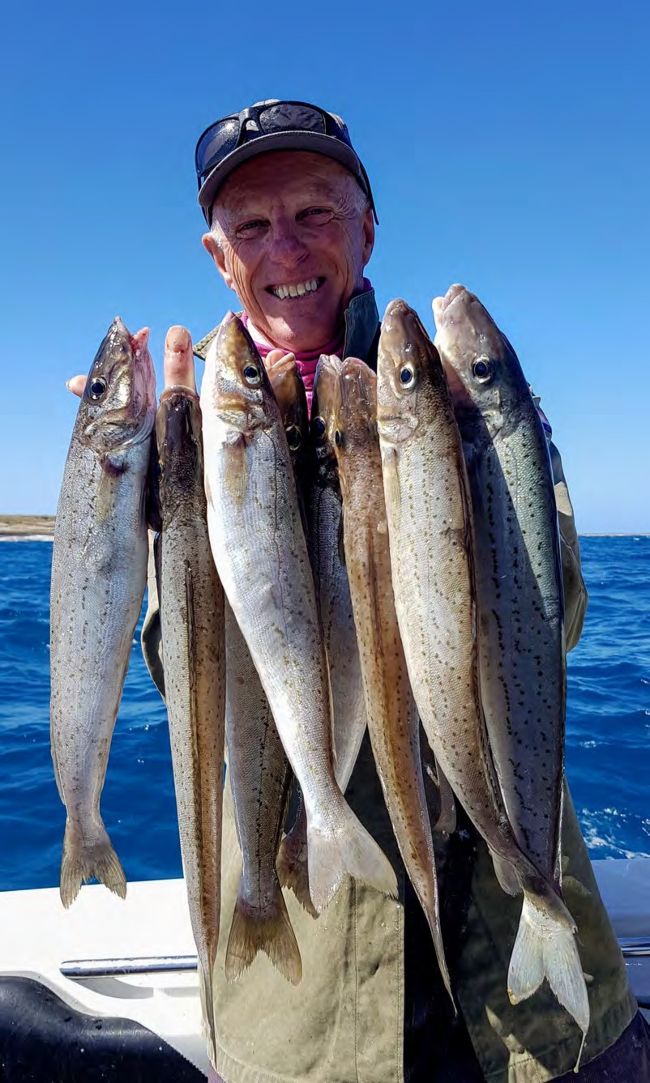
Alan McIntyre displays a typical catch of big Tumby whiting
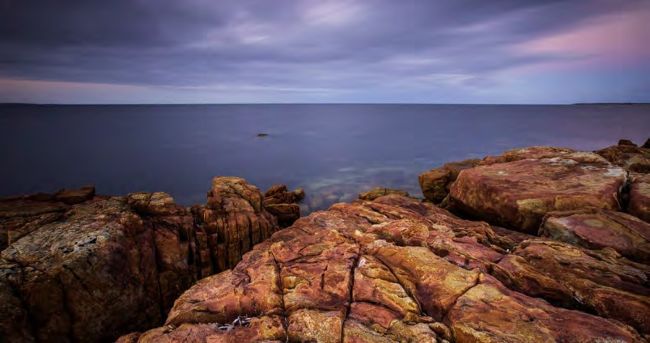
There are plenty of rock platforms close to town that produce squid
Another option, of course, is to jump onboard a local charter boat, which all but guarantees you a brilliant catch. Paul Davies owns and operates Southern Eyre Fishing Charters, based in Tumby and specialising in trips to the SJB Group. I’ve known Paul for a long time and regard him as one of the most knowledgeable anglers (and best skippers) on Eyre Peninsula. He runs a big Hydrofield Jaguar and knows the Group just about as anyone in the area. His rates are reasonable, and he regularly goes ‘above and beyond’ to give clients a wonderful day on the water.
Of course, Tumby Bay is also the ideal jumping off point for countless other locations around Lower Eyre Peninsula. Coffin Bay, Port Lincoln, Port Neill and Elliston are all within easy reach for a day trip, offering a diversity of angling options, from surf salmon through to jetty squid and a dozen other desirables in between.
There’s no doubt that broken down old Whyalla charter bus certainly played a significant role in igniting my long-standing love affair with Tumby Bay. It’s where many of my closest friends live and where many of my dearest fishing memories were made. It’s also where I’ll be spending as much time as I can before the Fishing Gods summon me to join them!
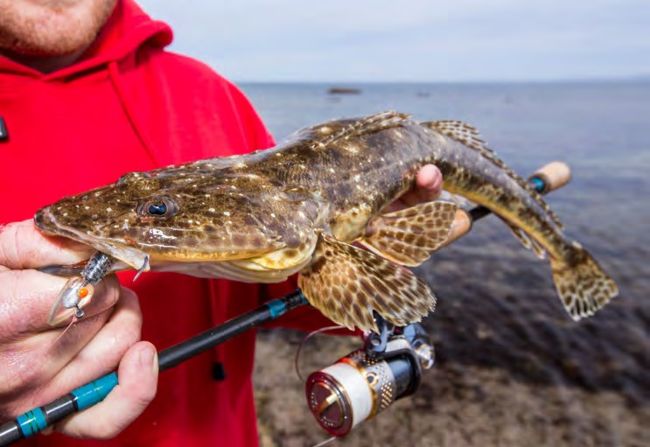
Decent flatties can be expected from late autumn into winter
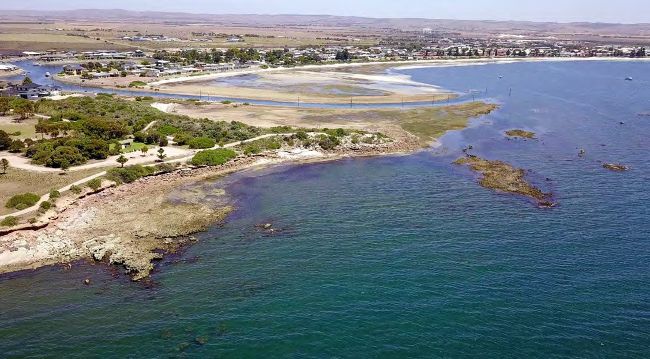
There’s plenty of shore fishing access to both north and south of town
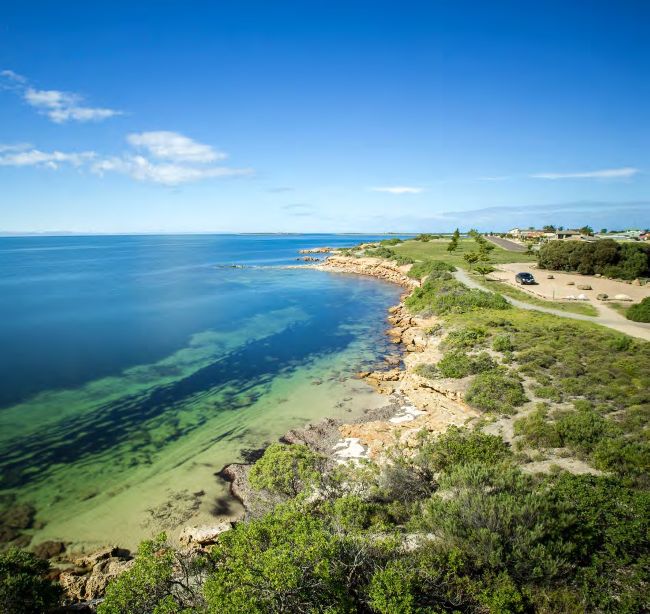
Casting into this sort of bottom often yields whiting and flathead